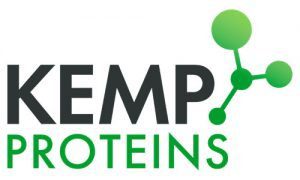
BARDA Continues to Develop Public-Private Partnerships to Protect the Country
Learn about a few of BARDA’s various programs and initiatives to support biotech and life science companies
Biotech and life sciences companies can benefit from partnering with the federal government in many ways, from funding to increased access to resources and manufacturing. But lesser-known than its counterparts at the National Institute of Health and National Cancer Institute is the Biomedical Advanced Research and Development Authority, or BARDA.
Gary Disbrow, Ph.D., the Director of BARDA, gave the opening keynote at the BioHealth Capital Region Forum on Sept. 20. Disbrow shared BARDA’s recent successes and programs that can help budding biotech and life sciences companies get their innovations to market.
BARDA was established in 2006 under the Pandemic and All Hazards Preparedness Act, and has since become an essential part of fighting public health threats, including COVID-19. BARDA is responsible for developing and licensing vaccines, therapeutics, and diagnostics for these threats, which also include nuclear, biological, and radiological threats, emerging diseases, and pandemic influenzas.

“We partner with the private sector… companies of any size as well as academic institutions or other organizations to develop [and license] those medical countermeasures,” Disbrow explained. “So we do more than just provide funding as a federal entity. We also provide cutting-edge expertise, so it’s a true partnership with the companies we award contracts to.”
In this way, BARDA acts as a research and development arm for partner institutions like the NIH and the Department of Defense. Since 2006, BARDA has partnered with 350 companies and organizations and supported 64 FDA approvals, licensures, clearances of vaccines, diagnostics, devices, and therapeutics. BARDA has also stood up new programs that can help companies get their invention to the product development stage.
CARB-X
CARB-X (Combatting Antibiotic-Resistant Bacteria Biopharmaceutical Accelerator) was launched in 2016 and is the world’s most scientifically diverse early development pipeline of new antibiotics, vaccines, and diagnostics. Located at Boston University, CARB-X is a partnership with the NIH, Wellcome Trust, and other global leaders. BARDA has invested $225 million total in addition to the $373 million invested by partners.
Since its inception, CARB-X has supported 92 different projects. Of those projects, 44% have not received funding from the US government before. This is because BARDA wants to target people and companies that might not otherwise work with the government due to the bureaucracy and red tape. Many of the companies that work with CARB-X are startups and have gone on to receive follow-up venture funding to the order of $2.3 billion.
Blue Knight
A partnership with Johnson & Johnson’s JLabs accelerator, Blue Knight is a collaboration dedicated to anticipating potential health security threats and preparing to respond to them. Since its inception, Blue Knight has partnered with 32 companies. Companies accepted to the program take up a physical residency at a JLabs location, one of which is in Washington, D.C. The companies receive JLabs resources and mentorship from both Johnson & Johnson and BARDA.
RELATED: The National Institutes of Health, a Technology Transfer Wellspring
DRIVe
DRIVe (Division of Research, Innovation, and Ventures) was launched in 2018 by BARDA. The program works with 13 accelerators across the United States to identify novel technologies that may be relevant to BARDA and provide market research.
Through private-public partnerships, DRIVe stimulates innovation through both non-dilutive and dilutive funding. Companies with new technology and research can apply to DRIVe’s open programs:
- Healing Lungs: Advancing technologies that can help patients with acute respiratory distress syndrome (ARDS) and oxygenate their blood without further straining
- Digital Health Tools for Pandemic Preparedness: Empowering people to respond to infectious disease outbreaks through rapidly deployable digital health tools
- Bringing Lab Testing to the Home: On-demand, at-home detection of biochemical health markers to enable diagnostics and telemedicine services
EZ-BAA
Companies that are interested in DRIVe programs can request up to $750,000 in funding through EZ-BAA, DRIVe’s main type of solicitation. To apply, companies only need to submit a 2,000-word proposal. Through this solicitation, BARDA has invested over $78 million.
“We will review it and let you know if we’re interested or if we’re not interested,” Disbrow said. “One of the things that BARDA is good at is we always provide transparent feedback to potential partners of what additional data you may need.”
Through its COVID diagnostics program, BARDA supported over 40 COVID diagnostics and got its first FDA approval for a COVID diagnostic this September.
Project BioShield
Since 2004, Project BioShield has worked to accelerate the research, development, purchase, and availability of medical countermeasures against biological, chemical, radiological, and nuclear (CRBN) threats. The project has authorized $5.6 billion in funding over 10 years for this purpose.
Through this program, BARDA helps these technologies obtain licensure, approval, or clearances, and helps with post-marketing commitments that are necessary after the approval is complete.
“Once those [medical countermasures] have the data set that is necessary to support an emergency use authorization or potential emergency use authorization, we can purchase those and put those into the strategic national stockpile,” Disbrow said.
BARDA Ventures
BARDA launched BARDA Ventures through its DRIVe initiative, partnering with the Global Health Investment Corporation to invest in promising companies and technologies. BARDA cannot take an equity position at a company as it is part of the federal government. Instead, it provides GHIC with funding and strategic guidance about BARDA’s priorities. In turn, GHIC sources innovation—not just in the United States but globally.
“We provide a strategic direction to them, what our priorities are for the fiscal year,” Disbrow explained, “but it is up to them to find the technologies that they feel are a fit for our strategic plan because once they start discussions with the companies and get form sheets, the federal government doesn’t want to stand in the way of them making those quick investments.”
TechWatch
TechWatch meetings give scientists a chance to talk about their product or technology with government officials and explore potential partnering opportunities. Submitting a request online is easy and can be a good first step to working with BARDA.
“Companies we have funded are often more successful if they come in for a TechWatch first as opposed to just submitting a cold proposal under one of our solicitations,” Disbrow said.
To get in touch with BARDA, visit its website. Disbrow also stressed that BARDA is always looking for talent. Job openings can be found at usajobs.gov.




